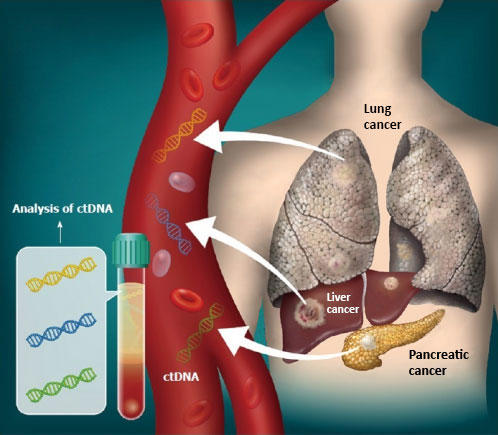The IAEA had another eventful year in 2024, taking its work to support peace and development even further out into the world.
Among many other things, the IAEA launched an Antarctic research mission to track plastic pollution through NUTEC Plastics, worked to increase access to cancer care around the world through Rays of Hope, helped countries improve agriculture to feed more people through Atoms4Food, and expanded global laboratory capacity to battle zoonotic diseases through ZODIAC.
In other key areas of work, the Agency continued efforts to prevent a nuclear accident in Ukraine, monitored the release of treated water from the Fukushima Daiichi Nuclear Power Plant and brought key stakeholders together to advance fusion energy through the World Fusion Energy Group.
At COP29 in Baku, low carbon nuclear energy was in the spotlight once again, with Director General Grossi taking part in a high-level event with the COP29 Presidency and international organizations, as well as an event on small modular reactors (SMRs) co-organized with the United States of America. The Atoms4Climate pavilion presented an interactive exhibit of nuclear applications for climate change monitoring, adaptation and mitigation.
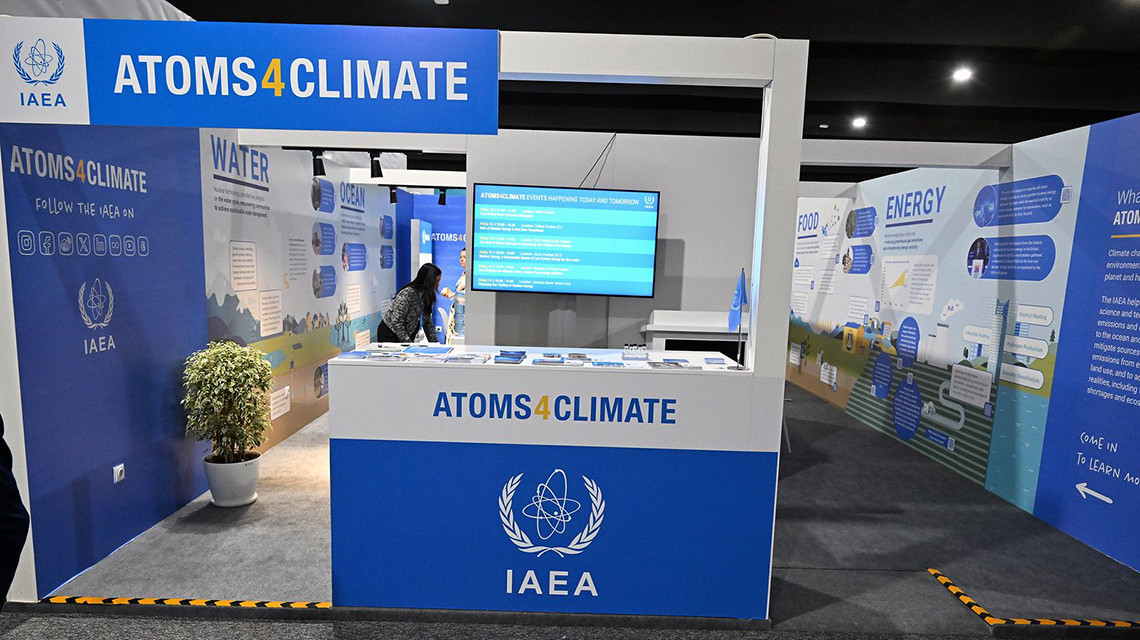
The IAEA booth at COP29 with exhibitions demonstrating how nuclear science and technology are addressing climate challenges.
Internally, the Agency remained strongly committed to providing an enabling environment for its staff, including measures to further promote gender equality. This has helped the IAEA reach unprecedented levels of gender parity, with 49 per cent of professional positions now held by women. The IAEA continued to leverage technology and innovation, with a big focus on getting the best out of AI to gain efficiencies and enhance productivity.
The IAEA continued to actively communicate about nuclear science and technology in 2024. This included hundreds of articles on www.iaea.org, numerous videos covering essential nuclear topics, and connecting with a growing digital community across multiple accounts (join this community by following us on LinkedIn, X, Instagram, Facebook, Threads, YouTube, Flickr).
Key IAEA achievements in 2024 included:
Science for Development: Nuclear Science and Applications
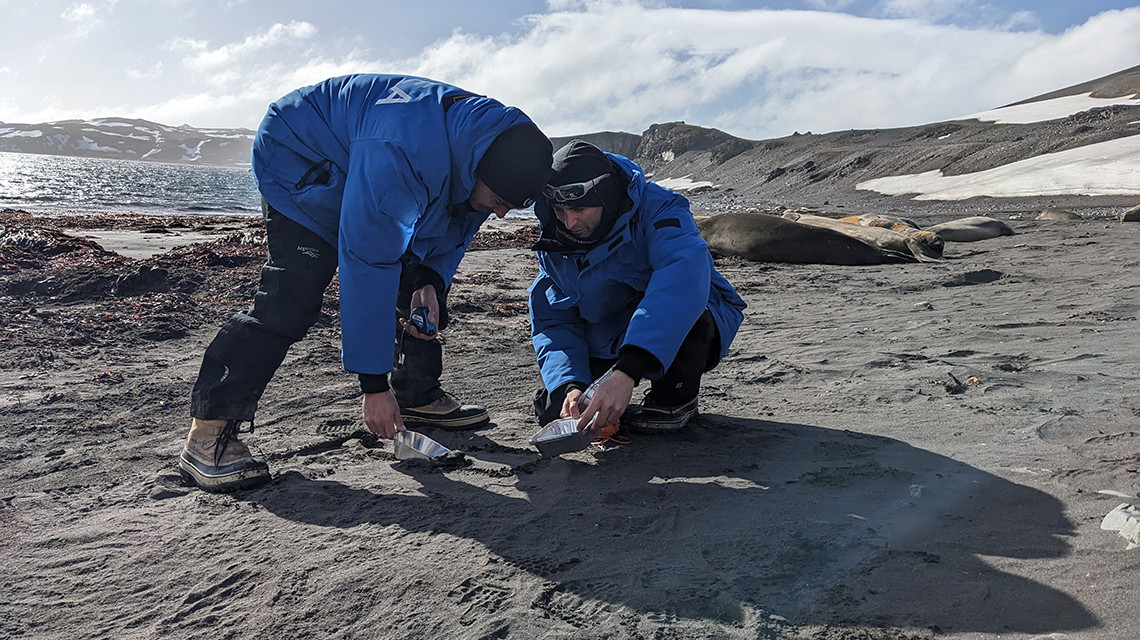
IAEA scientists taking samples in Antarctica as part of a 2024 research mission to study the impact of plastic pollution on the region and its inhabitants.
In 2024, the IAEA advanced its research and development efforts across diverse applications of nuclear science.
The Zoonotic Disease Integrated Action (ZODIAC) initiative expanded its reach, equipping nearly 40 veterinary laboratories with cutting-edge diagnostic tools and training over 1000 professionals across 130 countries. With 129 national laboratories now part of its network, ZODIAC fosters international collaboration through its dedicated portal.
Cancer remains a leading cause of death globally, yet nearly half of all patients lack access to radiotherapy. To address this, the IAEA's Rays of Hope initiative expanded its network of Anchor Centres to 11, and supported a Lancet Oncology Commission which published a comprehensive roadmap outlining strategies to address global radiotherapy gaps, improve access and reduce the cancer burden worldwide.
NUTEC Plastics achieved groundbreaking research results, confirming microplastics in Antarctica through a study with Argentine research stations, supported by the IAEA's Monaco Marine Environment Laboratories. The initiative expanded its 100-country laboratory network, driving global plastic pollution monitoring and research. It also advanced innovative solutions, using ionizing radiation to develop bio-based plastics, reducing reliance on petroleum-based materials and cutting greenhouse gas emissions.
The IAEA also developed methods to verify the authenticity of foods with specific geographic origins, by using stable isotope analysis to identify cases of fraud. This breakthrough enhances food authenticity and integrity in global markets.
In agriculture, advanced diagnostic assays developed by the Agency's Plant Breeding and Genetics Laboratory provide rapid, reliable, and resource-efficient tools for disease detection, addressing challenges exacerbated by climate change.
Since its launch in 2023, Atoms4Food has supported agrifood transformation through innovations in cropping systems, livestock productivity, and natural resource management. Through the Joint FAO/IAEA Centre, a roadmap for a protein digestibility database was developed to guide evidence-based dietary policies.
The Agency is also advancing industrial 3D printing by using non-destructive testing techniques like X rays and gamma computed tomography scans to ensure the quality and safety of 3D-printed components, supporting industries with more reliable production processes.
The Global Network of Water Analysis Laboratories (GloWAL) completed its baseline survey in 2024, involving 85 laboratories from 65 countries. The results will inform capacity-building efforts in isotope hydrology, with a focus on regional networks, including a Latin America-led initiative starting in 2025.
Upcoming in 2025: In 2025, the IAEA will continue advancing key global initiatives aimed at addressing some of the most pressing development challenges facing countries today. Rays of Hope, working closely with Anchor Centres, will enhance cancer care through regional capacity-building. Additionally, the development of the SUNRISE database will contribute to advancing radiation medicine, enabling policymakers and practitioners to leverage insights that strengthen cancer care worldwide. ZODIAC will expand its network and focus on disease forecasting, particularly zoonotic and climate-related health risks. NUTEC Plastics will address plastic pollution with upcycling technology and expand its marine microplastic monitoring network. Atoms4Food will scale nuclear technologies to improve food security and support climate-resilient crops, alongside its work on a protein digestibility database. GloWAL will continue to focus on capacity-building in isotope hydrology. The ReNuAL2 laboratory upgrades will strengthen the IAEA's role in addressing food, health, and environmental challenges.
Achieving Sustainable Development Goals through Technical Cooperation
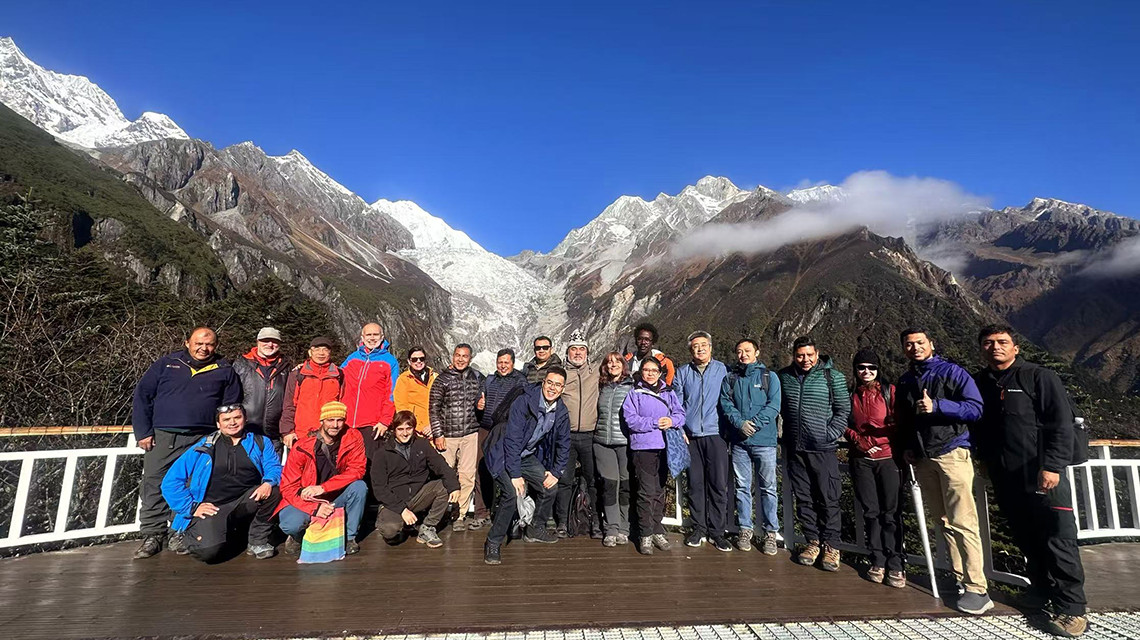
The IAEA, through its technical cooperation programme, helps countries measure the impacts of climate change on soil, sediments and water resources, such as in this project to build capacity in Asia and Latin America for increased climate-resilience in mountainous populations and ecosystems.
In 2024, the IAEA continued its robust support to countries through its technical cooperation programme. Driven by Member State demand, the programme helps countries achieve their development goals and address challenges in health, food security, water and the environment, industry, knowledge management, safety and energy. It also provides legal assistance to enable countries to fully benefit from nuclear science and technology.
Partnerships and South-South collaboration remained essential in the delivery of technical cooperation during the year. In 2024, the IAEA signed 25 new Country Programme Frameworks. In total, over 450 new technical cooperation projects were implemented in 148 countries and territories during the year. To support countries to address a growing cancer burden, the IAEA, together with the World Health Organization (WHO) and the International Agency for Research on Cancer (IARC), supported nine imPACT review missions in 2024. These assessments help to determine national cancer priorities and actions to improve services for cancer control.
A milestone in 2024 was the IAEA Ministerial Conference on Nuclear Science, Technology and Applications and the Technical Cooperation Programme. Member States adopted a declaration recognizing the important role of nuclear science in tackling current and emerging challenges, and of technical cooperation to transfer, expand and further accelerate the peaceful uses of nuclear science and technology.
Upcoming in 2025: Looking ahead, the IAEA will continue to build partnerships and alliances with a wide range of partners including from the private sector, development banks and philanthropic foundations to advance its support to countries, including through its flagship initiatives Rays of Hope, Atoms4Food, NUTEC Plastics and ZODIAC.
Strengthening Nuclear Safety and Security

The IAEA delivers two new ambulances to Ukraine, one at the Chornobyl Power Plant site and the other to Varash Hospital near Ukraine's Rivne Nuclear Power Plant, to provide high-quality medical care to employees, their families, and the community.
Ukraine
In 2024, we continued our work to enhance nuclear safety and security in Ukraine, with an IAEA presence at all five nuclear sites, involving 82 Agency staff on 80 missions. One of these, the IAEA Support and Assistance Mission to Zaporizhzhya (ISAMZ), continues to provide the only reliable source of information regarding the safety and security situation at the nuclear power plant, enabling us to influence decision making at the site. A total of eight ad-hoc assistance missions were deployed to Ukraine, including two led by the Director General, covering medical and technical assistance. Three of these missions were at the critical electrical substations which supply Ukraine's nuclear power stations, helping to prevent accidents at all the sites. Meanwhile, 36 deliveries of nuclear safety and security and related equipment were made to 11 organizations, 57 updates were published throughout the year and six reports issued.
Japan
Since the start of the discharge of ALPS treated water in August 2023 until November this year, Japan has discharged 10 batches totalling approximately 79 000 cubic meters of water. The IAEA confirmed that the tritium concentrations in the discharged batches were far below operational limits and the international safety standards. The IAEA also successfully established and began operations at our independent laboratory in Fukushima . This new laboratory space will enhance our capabilities, enabling us to measure concentrations of many radionuclides involved in the ALPS process with a high degree of precision and exceptionally low detection limits. The live webpage has received almost 200 000 visitors and will continue to provide information to the public and the international community.
Major conferences to strengthen safety and security
The fourth IAEA International Conference on Nuclear Security (ICONS) was held in Vienna in May 2024 and provided a global forum for ministers, policymakers, senior officials and nuclear security experts to discuss the future of nuclear security worldwide.
The fifth International Conference on Enhancing the Operational Safety of Nuclear Power Plants was held in April 2024 in Beijing, China. The conference was hosted through the China Nuclear Energy Association and was attended by over 600 delegates with representation from 40 countries.
Supporting nuclear security at major public events
The year 2024 marked the 20-year anniversary of the IAEA's programme of assistance for nuclear security at major public events, which has become a cornerstone of countries' efforts to secure large gatherings. In 2024, the Agency supported the planning or implementation of six major public events, including large sporting events, a religious event, and a major international conference. View a photo essay on our support to COP29 in Baku, Azerbaijan.
Coming up in 2025: The IAEA will hold its first conference on the safety of nuclear sites in the face of climate change and one on radiation protection in medicine. There will be a number of emergency exercises, including one that will test international responses to a simulated accident at a nuclear power plant in Romania.
Spotlight on Nuclear Energy
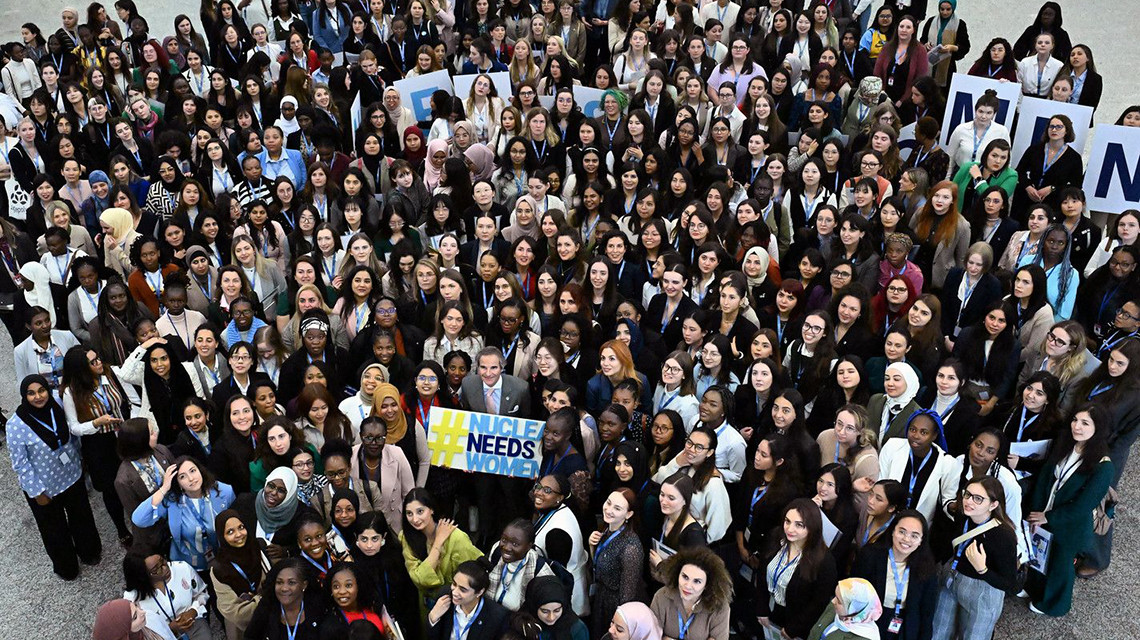
To mark International Women's Day in 2024, nearly 500 women, including Marie Sklodowska-Curie Fellowship Programme students and Lise Meitner Programme alumnae from over 100 countries, gathered at IAEA headquarters for the For More Women in Nuclear event to address gender parity in the nuclear field.
In 2024, the IAEA organized a range of conferences, technical meetings and workshops on nuclear power, including its role in the clean energy transition, small modular reactors (SMRs), spent fuel management, capacity building and research reactors.
In March, a Nuclear Energy Summit was held in Brussels, with IAEA Director General Rafael Mariano Grossi and Belgian Prime Minister Alexander De Croo co-chairing the world's first summit focused entirely on nuclear energy.
The first ever Nuclear Energy Summit was held in Brussels this week, organised jointly by the IAEA and Belgium. World leaders came together to reaffirm their commitment to nuclear energy as a way to reduce carbon emissions and meet development goals.
Advocating for intensified efforts to secure financing for nuclear energy gained momentum, with the Director General's engagement with the World Bank and other multilateral development banks. These efforts emphasized the importance of including nuclear in sustainable energy financing frameworks to meet global decarbonization goals.
In September, the first IAEA International Conference on SMRs and their Applications showcased the growing global interest in this technology, drawing some 1300 participants from around 100 countries. Among other energy highlights were multiple side events at the 68th General Conference, including on the Agency's Atoms4NetZero initiative and advances in nuclear technology developments for microreactors.
Support continued for countries interested in SMRs through the IAEA Platform on SMRs and the Nuclear Harmonization and Standardization Initiative, with the initiative's third plenary meeting held in October as well as the publication of several working papers throughout the year.
The Agency held the first ministerial meeting of the World Fusion Energy Group in Rome, helping to propel fusion technology towards reality.
The Agency's efforts to address the lack of gender parity in the nuclear field were highlighted in March at the For More Women in Nuclear event to mark International Women's Day. Almost 500 women, both Marie Sklodowska-Curie Fellowship Programme (MSCFP) students and Lise Meitner Programme (LMP) alumnae, from over 100 countries, gathered at IAEA headquarters for panel discussions, presentations and career talks with senior nuclear experts, industry and recruitment agencies.
Other notable events in 2024 were:
The 22nd IAEA International Project on Innovative Nuclear Reactors and Fuel Cycles (INPRO) Dialogue Forum was held in Jeju, Republic of Korea, focusing on ways to accelerate the deployment of SMRs.
The first Nuclear Stakeholder Engagement School was held in Trieste in November. The school, jointly organized with the Abdus Salam International Centre for Theoretical Physics (ICTP), gathered nearly three dozen participants from 25 countries for the five-day course.
Two Integrated Nuclear Infrastructure Review (INIR) missions were conducted: an INIR Phase 2 mission to Poland and an INIR Phase 1 Follow-up mission to the Philippines.
The recycling of radium sources to produce Actinium-225 to help fight cancer was advanced through the Global Radium-226 Management Initiative. In 2024, five shipments of radium from four countries were completed, with several more in the pipeline.
Upcoming in 2025: In May, the IAEA will hold the first ever International Conference on Stakeholder Engagement for Nuclear Power Programmes at its headquarters in Vienna. To raise awareness about key aspects of SMR development and deployment among government officials and policy makers in Member States interested in SMRs, the IAEA will launch an SMR School in early 2025, with a comprehensive curriculum currently being developed. The fourth Lise Meitner Programme visit will also take place, with the host country still to be determined. In 2025, the IAEA will formally launch ATLAS (Atomic Technologies Licensed for Applications at Sea), a new project to create a framework to enable the peaceful use of nuclear technology for maritime applications.
Safeguards
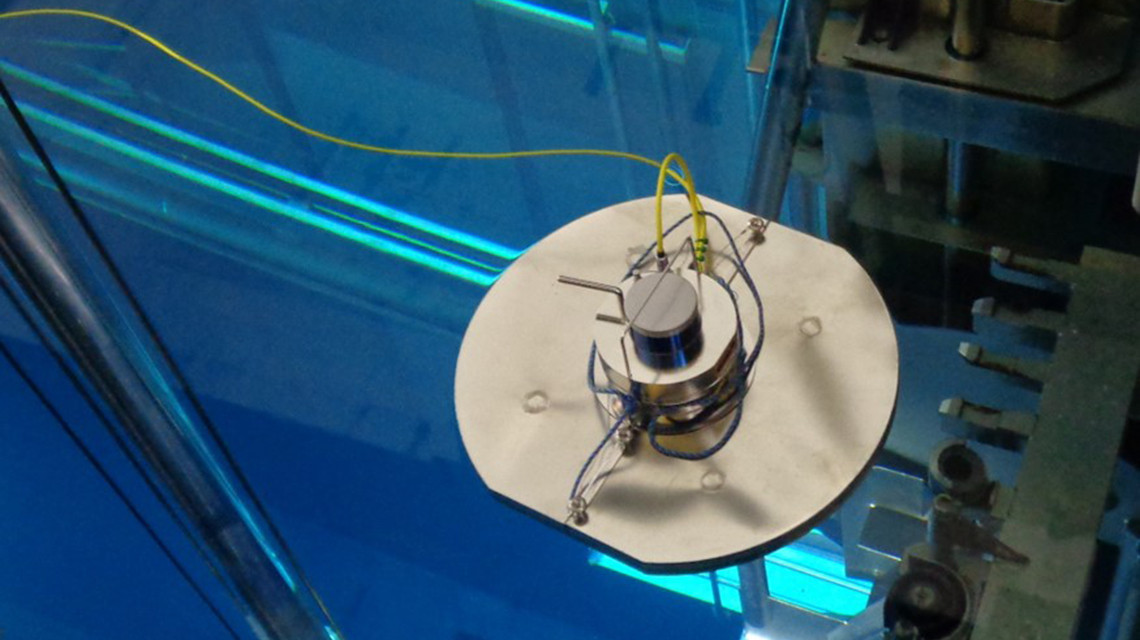
In 2024, the Robotized Cherenkov Viewing Device, a floating autonomous robotic platform, was authorised for use in regular safeguards verification activities. The device is set to become a more effective and efficient way to perform the verification of nuclear material stored in spent nuclear fuel ponds.
The Safeguards Statement and Background for 2023 presented the IAEA's conclusions on the peaceful use of nuclear material and technology for 189 countries. To achieve this, the report showed that the IAEA conducted more than 3000 in-field verification activities at over 1300 nuclear facilities and 'locations outside facilities' around the world. The IAEA was also able to draw a safeguards conclusion on the peaceful use of nuclear material for Ukraine where, despite the ongoing armed conflict, the necessary in-field verification activities were performed.
Throughout the year, the IAEA continued to conduct verification and monitoring in Iran in relation to the Joint Comprehensive Plan of Action as well as its commitment under the NPT Safeguards Agreement. Issues related to the presence of anthropogenic uranium particles at undeclared locations in Iran remained outstanding at the end of the year, despite the IAEA's best efforts to engage Iran to resolve them.
The IAEA also continued its efforts to support countries in concluding comprehensive safeguards agreements, amending or rescinding their small quantities protocols (SQPs), and also concluding additional protocols.
During the year, Fiji, Mongolia, Oman, and Sierra Leone amended their SQPs, while Bolivia (Plurinational State of) rescinded its SQP. Timor-Leste brought into force a comprehensive safeguards agreement with a small quantities protocol, and an additional protocol. This brings the total number of countries with AP in force to 143.
The IAEA continued to offer capacity-building support to states to help them strengthen their safeguards infrastructure. As part of this, in January the IAEA launched the new cycle of the capacity-building initiative COMPASS with four new countries: Bangladesh, Bolivia, Cameroon and Ghana. The initiative involves collaborative and targeted assistance to strengthen and sustain state systems of accounting for and control of nuclear material (SSACs) and state or regional authorities responsible for safeguards implementation (SRAs).
Also in 2024, the Robotized Cherenkov Viewing Device, a floating autonomous robotic platform, was authorised for use in regular safeguards verification activities. The device is set to become a more effective and efficient way to perform the verification of nuclear material stored in spent nuclear fuel ponds.


